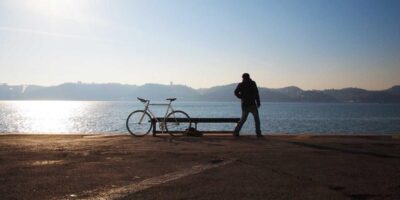Understanding Red-Eye Flights
Taking a red-eye flight often means traveling overnight and landing at your destination during early morning hours. While this type of travel can be convenient for many, it comes with its own set of challenges and advantages worth exploring.
What is a Red-Eye Flight?
A red-eye flight typically departs late at night and arrives the next morning, usually between 5:00 and 7:00 AM. The term red-eye refers to the tired, bloodshot eyes that passengers often have after traveling through the night without sufficient sleep.
Why Choose a Red-Eye Flight?
Many opt for red-eye flights for several reasons:
- Cost Efficiency: Red-eye flights are often cheaper than daytime flights.
- Time Management: These flights allow you to maximize your daytime hours for either business or leisure at your destination.
- Less Traffic: Airports and flights are generally less crowded during late-night hours.
For business travelers, a red-eye flight means you can work a full day, travel overnight, and be ready for meetings the next morning. For tourists, it can mean an extra day to explore.
Challenges of Red-Eye Flights
Despite the benefits, red-eye flights come with their own set of challenges:
- Disrupted Sleep: Sleeping on a plane is not as restful as sleeping in a bed.
- Jet Lag: Arriving early in the morning can mess with your body’s internal clock.
- Fatigue: You might arrive at your destination feeling tired and groggy.
Overcoming these issues usually requires some planning and adjustment techniques.
Tips for Surviving a Red-Eye Flight
Here are some strategies to make your red-eye flight more bearable:
Selecting Your Seat
Choose a window seat if you plan to sleep. It allows you to rest your head against the wall and reduces the chances of being disturbed by fellow passengers needing to move around.
Dress Comfortably
Wear loose, comfortable clothing to make it easier to fall asleep. Layering can help you adjust to varying temperatures on the plane.
Maximize Comfort
Bring a travel pillow and blanket. Noise-canceling headphones or earplugs and an eye mask can help block out ambient noise and light.
Manage Your Food and Drink Intake
Eat a light meal before boarding to avoid feeling bloated. Drink water to stay hydrated but avoid caffeine and alcohol, both of which can interfere with sleep.
Create a Sleep-Friendly Environment
Recline your seat, use your pillow and blanket, and try to mimic your usual bedtime routine to signal to your body that it’s time to sleep.
Prepare for Jet Lag
Adjust your schedule a few days before your flight to the time zone of your destination. Upon arrival, get some sunlight exposure to help reset your internal clock.
Health Considerations
Sitting for extended periods can lead to circulation problems. To mitigate this, walk around the cabin periodically. Perform simple foot and leg exercises while seated to encourage blood flow. Consider wearing compression socks to further reduce the risk of swelling and blood clots.
Dry air in the cabin can also lead to dehydration. Drinking plenty of water and using a saline nasal spray can help maintain hydration levels.
Packing Essentials for a Red-Eye Flight
- Travel pillow
- Light blanket or large scarf
- Eye mask
- Noise-canceling headphones or earplugs
- Compression socks
- Water bottle
- Healthy snacks
Having these items handy can make a significant difference in your comfort and well-being during a red-eye flight.
Frequently Asked Questions
Are red-eye flights safe?
Yes, red-eye flights are just as safe as daytime flights. Airlines and flight crews are trained to maintain safety standards regardless of the time of travel.
Can you sleep on a red-eye flight?
While it may not be as restful as sleeping in a bed, many people can sleep on a red-eye flight with the right preparations and comfort aids.
What should I eat before a red-eye flight?
Opt for a light, balanced meal that won’t leave you feeling too full or bloated. Foods rich in protein and healthy fats can help you feel satisfied longer.
Conclusion
Red-eye flights offer a unique set of benefits and challenges. By preparing adequately and prioritizing comfort, travelers can make the most out of overnight travel, arriving at their destination ready to take on the day.
“`
